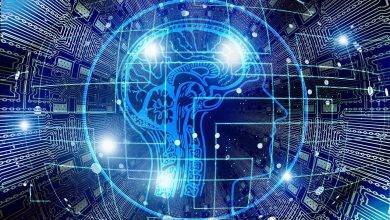Advantages of edge computing for real-time analytics

I will discuss the Advantages of edge computing for real-time analytics in this blog post. In today’s hyper-connected culture, where data continually floods from infinite sources, the demand for quick comprehension has never been more robust. The ability to assess data in real time profoundly impacts business operations, from enhancing industrial processes to improving user experiences enabled by smart devices. Edge computing is a paradigm leap that will unleash the full power of real-time analytics.
In this age of digital transformation, when milliseconds may be the difference between seizing an opportunity and missing out, the value of real-time analytics cannot be overstated. In several industries, like supply chain management and healthcare monitoring, immediately assessing and acting on data has become a competitive advantage. Edge computing’s advantages over more traditional, centralized approaches to data processing become clear.
There has been a fundamental shift in managing data, and edge computing is at the forefront. Historically, data has traveled from its origin to centralized data centers over networks that may span continents. While this path might be helpful in some scenarios, it always results in latency, that dreaded delay that can influence whether or not you get timely insights. With edge computing, analytics may be conducted at the speed of thought by processing data as near the source as possible, reducing latency.
Advantages of Edge Computing for Real-Time Analytics
Low Latency and Faster Response Times
Success depends on the race to obtain, analyze, and act on data in the digital era when every millisecond matters. Making split-second judgments based on real-time data is a game-changer for self-driving cars and industrial plants, streamlining production lines. This is where the marvel of low latency and faster response times, facilitated by edge computing, takes center stage.
The Latency Conundrum:
Latency, often called the “lag” between sending and receiving data, can have far-reaching consequences. In real-time analytics, latency can mean the difference between seizing a golden opportunity and witnessing it slip away. Consider a scenario where a smart surveillance system detects unauthorized access in a restricted area. Traditional data processing models require streaming the data to a remote server for analysis, incurring a delay that compromises the situation’s urgency. However, with edge computing, data is processed locally, minimizing the time it takes to derive insights and enabling swift action.
The Edge Advantage:
Edge computing addresses latency by bringing the analytics process closer to the data source. Instead of routing data to a centralized data center – a journey that can span vast geographical distances – edge devices process data on-site or nearby. This proximity eliminates data needing to traverse long distances, significantly reducing latency. As a result, real-time analytics become truly real-time, enabling immediate response and decision-making.
Applications in Action:
Several industries are already reaping the benefits of low latency and faster response times through edge computing:
Autonomous Vehicles: Self-driving cars rely on split-second data processing to navigate and respond to their environment. Edge computing ensures that critical decisions, like breaking to avoid an obstacle, are made swiftly without relying on distant servers.
Healthcare: Edge computing allows quick data processing from medical sensors in telemedicine applications to ensure timely treatments.
Manufacturing: Edge-powered analytics optimize production processes by analyzing real-time sensor data, allowing factories to fine-tune operations and minimize downtime.
Retail: Smart checkout systems can process customer purchases instantly, reducing checkout times and enhancing the shopping experience.
Bandwidth Efficiency
In our data-driven world, where information flows ceaselessly across networks, the efficient utilization of bandwidth has become a pivotal concern. As businesses and industries increasingly rely on data-intensive applications, the strain on network infrastructure is palpable. Edge computing enhances bandwidth efficiency and minimizes the burden on centralized data centers, making digital environments more efficient and responsive.
The Bandwidth Bottleneck:
In the traditional data processing model, edge devices often transmit information to remote data centers for analysis. This data pilgrimage incurs substantial bandwidth consumption, leading to congestion, latency, and inefficiency. Imagine a scenario in the Internet of Things (IoT) domain, where sensors in a smart city continuously transmit data to a distant cloud server. The sheer volume of data and the distance it travels result in a bandwidth bottleneck that can impede real-time insights.
The Edge Computing Solution:
Edge computing introduces a transformative shift in processing data, leveraging local computing resources near the data source. By performing initial analysis and filtering at the edge devices, only pertinent information is sent to centralized systems. This intelligent data reduction minimizes the amount of data traversing networks, alleviating bandwidth strain and optimizing network utilization.
Applications in Action:
IoT Networks: In smart agriculture, edge devices placed in fields can process sensor data locally, sending only critical information about soil moisture levels or crop health to the cloud. This not only conserves bandwidth but also ensures timely responses to changing conditions.
Video Surveillance: Edge-powered cameras can analyze video feeds on-site, transmitting only relevant footage – such as detected anomalies or security breaches – to central monitoring systems. This approach minimizes the need to stream high-definition video, reducing bandwidth consumption constantly.
Retail Inventory Management: Edge devices in retail environments can process RFID data to monitor inventory levels and alert central systems only when restocking is necessary, optimizing supply chain operations while conserving bandwidth.
Future-Proofing Connectivity:
As our digital landscape evolves, the demand for seamless connectivity will continue to escalate. Edge computing is not just a solution for today’s bandwidth challenges; it’s a visionary approach that future-proofs our networks. With the rise of 5G and the Internet of Things, the strain on bandwidth is expected to intensify. By offloading data processing to distributed edge devices, edge computing enables networks to accommodate higher volumes of data without succumbing to congestion.
Improved Data Privacy and Security
In an era where data breaches and cyber threats have become daily headlines, ensuring the privacy and security of sensitive information has become paramount. As businesses grapple with safeguarding data across complex networks, edge computing emerges as a formidable ally in the ongoing battle for digital protection. By placing data processing and analysis closer to the source, edge computing bolsters privacy and fortifies the security architecture, offering a robust shield against potential vulnerabilities.
The Privacy Predicament:
Centralized data processing models often transmit sensitive information from vast networks to distant data centers. This data transfer exposes information to potential interception and raises concerns about compliance with data protection regulations. Imagine a healthcare scenario where patient medical records are transmitted for analysis – the inherent risk of exposure is a pressing concern.
Edge Computing’s Data Haven:
Edge computing reimagines data privacy by minimizing the exposure of sensitive information during transmission. By processing data locally or near the data source, edge devices drastically reduce the distance data must travel. This decentralized approach reduces the attack surface for potential breaches and unauthorized access. Moreover, only aggregated and relevant insights are sent to centralized systems, ensuring that sensitive raw data remains confined to the edge.
Applications in Action:
- Healthcare IoT: Medical devices with edge computing capabilities can process patient data locally, allowing timely analysis without compromising privacy. Healthcare providers receive only anonymized or encrypted summaries, ensuring compliance with privacy regulations like HIPAA.
- Financial Transactions: Edge devices can verify and process financial transactions locally, minimizing the exposure of sensitive payment information. This approach adds an extra layer of security to online transactions.
- Smart Homes: Edge-powered devices can process audio and video data within the home environment, reducing the need to transmit potentially private conversations or footage to the cloud for analysis.
Fortifying Cybersecurity:
Edge computing doesn’t just safeguard privacy; it also raises the bar for cybersecurity. With data processing localized at the edge, the attack surface for malicious actors is substantially reduced. The edge environment would limit potential breaches, preventing unauthorized access to central data repositories. This inherent segmentation adds a layer of defense against cyber threats.
Future-Proofing Data Protection:
As data becomes an even more valuable currency in the digital age, the need for robust privacy and security measures intensifies. Edge computing isn’t just a solution for today’s data protection challenges; it’s a strategic investment in future-proofing digital assets. As regulations like GDPR and CCPA evolve and cybersecurity threats grow more sophisticated, edge computing provides a proactive approach to safeguarding sensitive information.
Remote and Harsh Environments
In a world where innovation knows no bounds, data-driven insights are sought even in the globe’s most challenging and remote corners. Whether it’s monitoring an oil rig in the open sea or collecting environmental data in the heart of a desert, the demand for real-time analytics persists, regardless of the environment’s hostility. Enter edge computing, a transformative paradigm that extends its influence beyond traditional settings, empowering industries to harness the power of data even in the most remote and inhospitable locales.
The Challenge of Remote and Harsh Environments:
In remote and harsh environments, conventional data processing models face significant challenges. The vast distances and limited connectivity in such areas can render real-time analytics nearly impossible. Imagine a scenario where a team of researchers is studying wildlife behavior in a dense rainforest.
The Edge Advantage in Unlikely Places:
With its localized processing capabilities, Edge computing rises in remote and harsh environments. Organizations may evaluate data without substantial data transfer by deploying computer resources near the data source. This approach reduces latency and ensures we derive real-time insights even when reliable connectivity is absent.
Applications in Action:
- Natural Resource Management: In remote mining sites, edge devices can monitor equipment health and optimize operations locally, ensuring continuous productivity without relying on consistent network connectivity.
- Disaster Response: In disaster-stricken areas where traditional infrastructure may be compromised, edge computing enables emergency teams to process critical data on the ground, facilitating efficient rescue and relief efforts.
- Precision Agriculture: In fields far from urban centers, edge devices can analyze soil and weather data, enabling farmers to make informed decisions about planting and irrigation without being dependent on constant connectivity.
Building Resilience:
Edge computing addresses the challenges of remote and harsh environments and enhances resilience. By processing data locally, industries can ensure continued operation even during network disruptions. Edge devices can store and analyze data independently, allowing for autonomous decision-making even when connectivity is compromised. This resilience is particularly crucial in critical applications, such as remote infrastructure monitoring or disaster response.
A New Era of Exploration:
Edge computing is opening doors to a new era of exploration and innovation. Edge computing links data and insights in severe settings as enterprises explore deep waters and high mountain summits. With the ability to process data locally, industries can unlock the potential of remote and harsh environments, deriving meaningful insights that drive progress and transform industries.
Advantages of edge computing for real-time analytics- Conclusion
In a world driven by data, the quest for real-time insights has become a relentless pursuit across industries. While effective in its own right, the emergence of edge computing has reshaped traditional data processing paradigms. Edge computing’s real-time analytics advantages show that this revolutionary paradigm may revolutionize efficiency, security, and innovation.
We saw how edge computing reduces latency and reaction times. The journey through bandwidth efficiency revealed how edge devices act as intelligent filters, minimizing data traffic and maximizing network performance. Our data privacy and security research showed how edge computing protects sensitive data, establishing trust and compliance.
We found that edge computing’s durability allows real-time analytics in challenging contexts. Each advantage of edge computing is a thread in a tapestry of transformation, weaving a narrative of empowerment and progress.
As industries stand at the precipice of technological evolution, the path forward is clear: embrace edge computing as the catalyst for change. Data processing, analysis, and action at the edge is a paradigm change, not merely a technical advance. A data-driven future in manufacturing, healthcare, and disaster response requires edge computing to optimize production lines, patient care, and recovery.



